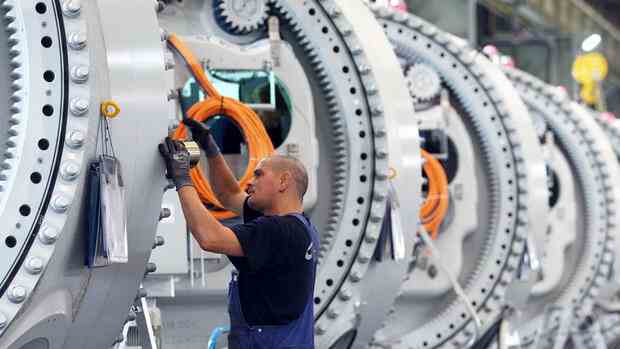There is currently a shortage of 326,000 workers with scientific and technical qualifications.
(Photo: dpa)
Berlin They are particularly scarce and at the same time urgently needed for future tasks such as digitization or decarbonization: skilled workers with a qualification in mathematics, IT, natural sciences or technology (MINT).
The fact that a scarce supply with increasing demand determines the price is shown by the remuneration. Full-time employees subject to social security contributions in the MINT professional groups earn an average of 4163 euros gross per month, according to an analysis by the German Economic Institute (IW).
>> Read here: These 22 jobs offer top salaries with little competition
The median salary of all employees is significantly lower at 3516 euros. The median splits the income distribution right down the middle, i.e. half of the employees earn less, the other half more.
Top jobs of the day
Find the best jobs now and
be notified by email.
The better earning opportunities compared to other occupations are evident at all qualification levels: skilled workers with vocational training, specialists with master craftsman or technician degrees and academics.
If you only look at the age group of 25 to 44 year olds, skilled workers earn the highest median wages in IT (4185 euros), technical research and production control (3778 euros), energy and electrical engineering (3642 euros) and in construction, the Surveying and building technology (3636).
Among the specialists in this age group, plastics production and the chemical industry (EUR 4891), information technology (EUR 4826), technical research and production control (EUR 4688) as well as energy and electrical engineering (EUR 4461) are ahead.
At the expert level, which requires a degree, engineers earn in technical research and production control (5856 euros), in mechanical and automotive engineering (5749 euros), in plastics production and the chemical industry (5723 euros) and in energy and electrical engineering ( 5517 euros) the most.
Despite the good earnings prospects, fewer and fewer young people are interested in MINT subjects at universities. The number of first-year students in scientific and technical subjects fell from almost 198,000 in the 2016/17 academic year to around 172,000 – and thus more than the total number of first-year students.
This is also worrying because the labor gap in STEM professions is already huge today. According to IW, in October it was a good 326,000 people. The greatest bottlenecks are among skilled workers with scientific and technical qualifications, of whom a good 154,000 are missing, among academics there are almost 138,000 and among those with professional qualifications with master craftsman or technician degrees around 34,000.
More: In this way, more women can be attracted to MINT professions

